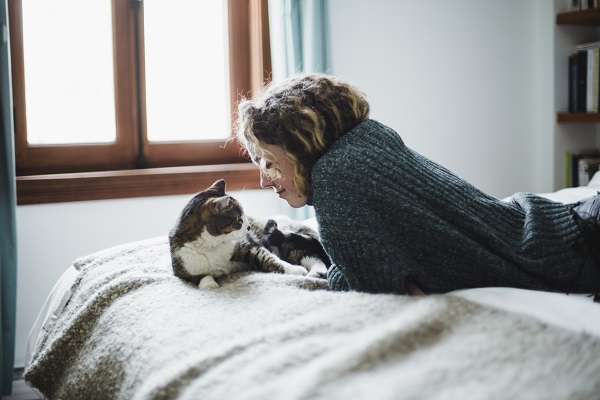-
Form a mental image of ‘what a doctor looks like’, and two things might immediately spring to mind. The first is the ubiquitous white coat. But the second would be a strange, bracketed bridle-type device hooked loosely around the neck.
This is, of course, a stethoscope, and other than a few minor upgrades in both design and material, it has been utilised by physicians for hundreds of years as a primary diagnostic tool.
The story behind the stethoscope is a curious mixture of the tragic, comedic and literary. It goes something like this…
In 1786, in the north-western township of Quimper, France, a five-year-old boy was orphaned when his mother died of tuberculosis. As she emitted the last of those ragged breaths from the bleeding lungs that must have plagued her for months or years, perhaps poor little René hugged his mother tight, pressing his head hard to her chest, and in that moment wished fervently that he could have done something, anything to save her…
For the next seven years, little René would be raised by his great-uncle, a priest. And in that cold, stone abbey under strict religious observation, the boy’s pious nature would be forever formed.
"In 1816, he happened to observe some kids playing with a small hollow pipe. Holding one end to their ears, they would scratch the other end with a pin and laugh."
At age 12, René Theophile Hyacinthe Laennec was dispatched to train in medicine under his uncle, Guillaime-François. From that moment onwards, showing great aptitude and a dedication to healing, René eventually became a respected Parisian doctor at Necker-Enfants Malades Hôpital (Hospital for Sick Children), who pioneered the diagnosis of chest conditions.
It was during this time, in 1816, that he happened to observe some kids playing with a small hollow pipe. Holding one end to their ears, they would scratch the other end with a pin and then laugh as the amplified sound reverberated up the pipe.
Thinking nothing of it, René went into his consulting rooms to find a young woman complaining of chest pains waiting for him. What happened next changed everything.
Up until that point, doctors practiced something called ‘percussion’. By pressing their ear to the chests of patients and tapping their fingers hard, they could note changing resonance in body cavities to help form certain diagnoses. However, in this case, being a devoutly religious man of prudish disposition, the good doctor was confronted with an immediate conundrum.
See, the young woman not only presented with a nasty cough, but was very well endowed in the mammary glands. Fearing hellfire and damnation, René could not bring himself to squish his ears up against her breasts.
Solution? Steal the idea behind the kids’ pipe.
René’s initial invention involved a simple wooden tube with a flared end, similar to an ear trumpet or steampunk style blunderbuss. He dubbed it the stethoscope – derived from the Greek ‘stetho’ (chest) and ‘scopos’ (examination) – and thus the practice of auscultation (meaning ‘to listen’) was born, and with it a reconceptualisation of medicine.
"René’s initial invention involved a simple wooden tube with a flared end, similar to an ear trumpet or steampunk style blunderbuss."
In 1840 British physician Golding Bird, who suffered from bad rheumatism, adapted the design to include a flexible tube so he wouldn’t have to bend over. Twelve years later, a two-eared prototype was developed by an Irish doctor called Arthur Leared, and this binaural design was perfected in 1852 by George Philip Cammann for mass production, along with a definitive treatise on auscultation.
Since then, other improvements have been made around materials, weight and, importantly, acoustics. The 1940s standard Rappaport-Sprague model was two-sided, enabling different auditory frequencies for the respiratory versus the cardiovascular system. Then, in the early 1960s, Harvard professor David Littmann’s new stethoscope provided a significantly wider range of physiological sounds.
In 1999, Richard Deslauriers’ DRG Puretone became the first external noise-reducing stethoscope. While some argue modern radiological technologies and ultrasound have rendered stethoscopes increasingly obsolete (and in the field of cardiological diagnosis, this is true), many doctors still routinely employ auscultation to form early diagnosis – particularly in regions where access to such medical technology is limited. For example, in order to provide cheaper stethoscopes for third-world communities, an open-source 3D-printed stethoscope based on Littmann’s model was developed by Dr. Tarek Loubani as recently as 2015.
As for the bashful Dr René Laennec, he died at the early age of 45 – a mere 10 years after his invention changed medicine forever. Further immortalised, Laennec would reappear almost a century later as a heroic medic in Rudyard Kipling's fantasy book Rewards and Fairies. Thus, the little boy who couldn’t save his dying mother went on to save millions of others by virtue of his stethoscope’s early diagnostic power.
The history of the stethoscope

-
How is ‘phubbing’ hurting your relationships?
Here’s how to stop phubbing and be more mindful of your phone habits, to help improve face to face interactions with your family and friends.
-
Are the winter blues real?
Simple ways to boost your mood in winter.
-
Mental fitness explained
Just as you work to strengthen your body, your mental health deserves attention and exercise too.
-
The link between stress, anxiety and jaw pain
Physiotherapist Michael Chan explains how stress and anxiety can cause jaw pain, and how to help get some relief.
-
When you can't sleep next to your partner
You love everything about them – except their sleep habits.
-
The 7 best sleep apps
7 apps for deep restorative sleep
Subscribe to receive the best from Live Better every week. Healthy recipes, exercise tips and activities, offers and promotions – everything to help you eat, move and feel better.
By clicking sign up I understand and agree to Medibank's privacy policy




.jpg)

